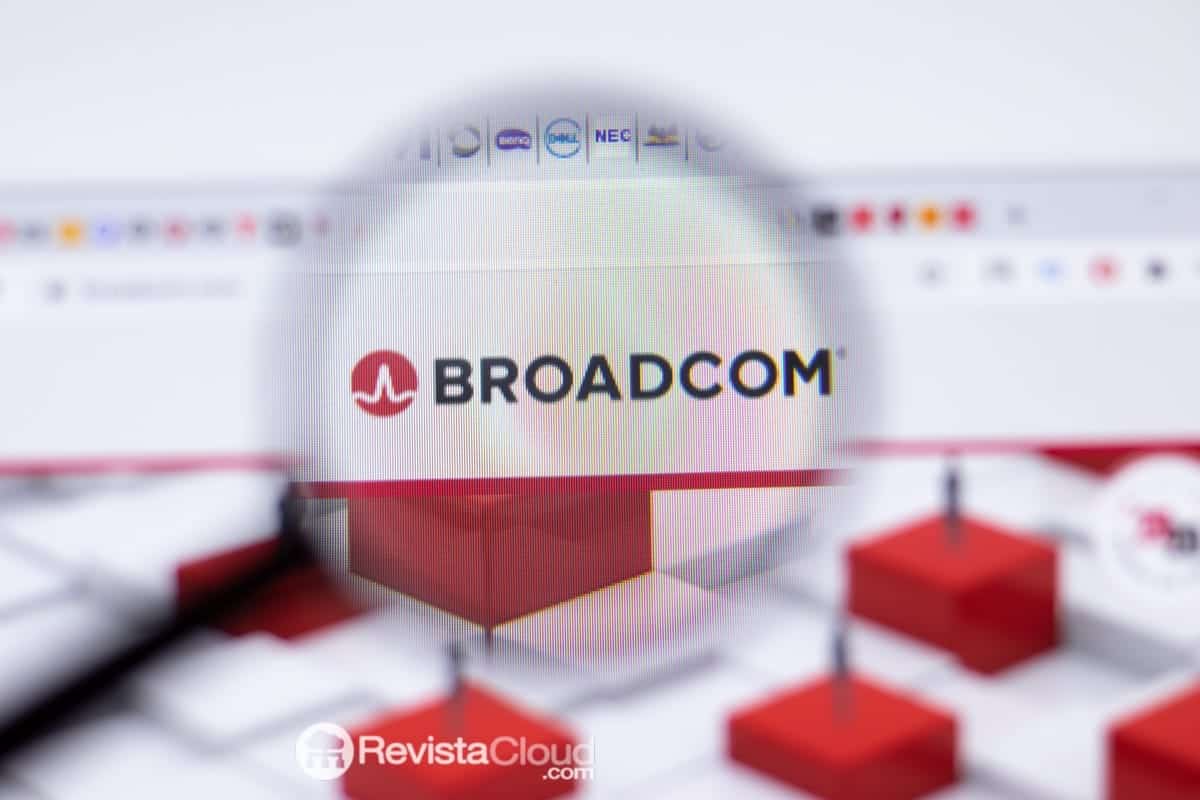The world of semiconductors is experiencing a new gold rush, and Broadcom has positioned itself at the heart of this technological revolution. The American company, which in recent years has gained prominence for designing ASICs and specialized accelerators for artificial intelligence, has just reported financial results that far exceeded market expectations and boosted analyst valuations.
Record-breaking Results in Q3 FY 2025
Broadcom reported revenue of $15.95 billion in its third fiscal quarter of 2025, representing a 22% year-over-year growth. This figure not only surpasses the $15.83 billion forecasted by consensus but also reinforces the narrative that artificial intelligence is today’s most powerful industry driver.
Regarding earnings per share (EPS), the company posted $1.69, again above analysts’ expectations. But the most notable detail came from the breakdown: revenue tied to AI semiconductors reached $5.2 billion, a 63% increase compared to the previous year.
With these results, Broadcom not only met expectations but achieved a perfect score: surpassing forecasts in revenue, earnings, and AI segment growth.
An Even More Optimistic Future
The company didn’t stop there. For the fourth fiscal quarter, Broadcom raised its guidance, now expecting to generate $17.4 billion in total revenue, with $6.2 billion coming from the AI semiconductor business. This positions the company as one of the key players in the race to provide infrastructure for next-generation data centers.
Among recent product launches are the Tomahawk Ultra, an Ethernet chip designed for intra-data center interconnection, and the new generation Jericho, an Ethernet router built for large-scale distributed AI clusters. Both products showcase Broadcom’s strategic positioning: becoming an essential part of the network fabric enabling AI model training and inference.
Comparisons to Steve Jobs
The results were so impressive that some analysts did not hesitate to elevate their valuations. Ben Reitzes of Melius Research described the latest earnings report as “the most bullish and memorable results call” he’s seen, and placed Hock Tan, Broadcom’s CEO, on par with iconic figures like Steve Jobs in terms of leadership and industry impact.
Reitzes also increased the target stock price to $415, reflecting confidence in the company’s sustained growth.
Multimillion-Dollar Contracts and OpenAI’s Interest
Adding to this scenario, according to the Financial Times, OpenAI plans to spend $10 billion on designing an ASIC in partnership with Broadcom next year. Tan himself confirmed during the earnings call the existence of a $10 billion contract with a strategic client, though he did not disclose names.
If this partnership comes to fruition, Broadcom would reinforce its position as a key supplier in the new AI economy, where every large model requires customized hardware infrastructure.
Goldman Sachs valued the news as the most significant development of the day, highlighting that a new custom silicon client focused on inference could further boost AI semiconductor revenue in 2026, with an expected growth of around 60%.
The New Center of the Tech War
Broadcom’s results illustrate a profound shift in the industry: while traditional giants like Intel struggle to regain ground, highly specialized companies in AI chips and high-speed networks are becoming indispensable players.
Led by Hock Tan, the company has demonstrated that it can not only compete but also lead in a segment dominated by headlines from NVIDIA and AMD. Its ability to offer tailored solutions for companies like OpenAI further reveals that the future of AI will depend as much on software as on hardware that is specialized and optimized for each task.
Frequently Asked Questions (FAQ)
1. Why are Broadcom’s AI revenues so significant?
Because they show that the company has positioned itself in the fastest-growing segment of the tech industry, with a 63% year-over-year increase in this area alone.
2. What role do the Tomahawk Ultra and Jericho chips play in this growth?
They are networking solutions specifically designed for data centers and AI clusters, essential for training and inference of large language models.
3. What does it mean that OpenAI might invest $10 billion in an ASIC with Broadcom?
It indicates that OpenAI is seeking custom chips to optimize its inference workloads, and Broadcom could become a strategic partner at the level of NVIDIA.
4. Why do some analysts compare Broadcom’s CEO to Steve Jobs?
Because Hock Tan has successfully led the company toward exceptional growth during a critical industry moment, demonstrating strategic vision and execution skills reminiscent of Jobs’s legacy.
via: wccftech

